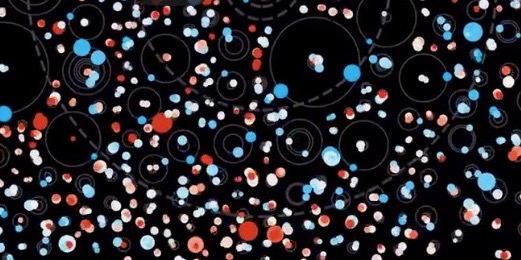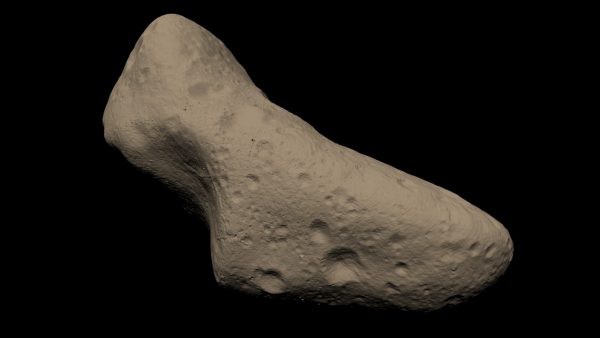Learning AI from NASA and Silicon Valley

Bern researcher and NASA take a cue from Silicon Valley to hatch Artificial Intelligence Technologies.
Could the same computer algorithms that teach autonomous cars to drive safely help identify nearby asteroids or discover life in the universe? NASA scientists are trying to figure that out by partnering with pioneers in artificial intelligence (AI) — companies such as Intel, IBM and Google — to apply advanced computer algorithms to problems in space science.
Machine learning is a type of AI. It describes the most widely used algorithms and other tools that allow computers to learn from data in order to make predictions and categorize objects much faster and more accurately than a human being can. Consequently, machine learning is widely used to help technology companies recognize faces in photos or predict what movies people would enjoy. But some scientists see applications far beyond Earth.
Daniel Angerhausen, fellow at the Center for Space and Habitability (CSH) at the University of Bern and PlanetS Associate is one of the early adaptors of state of the art machine learning techniques in astrophysics. Over the past two year he mentored various teams that use them to detect and characterize planets outside our solar system with the goal to eventually find life in space.
One of his collaborator is Giada Arney, an astrobiologist at NASA’s Goddard Space Flight Center in Greenbelt, Maryland. She also hopes machine learning can help her and her colleagues find a needle of life in a haystack of data that will be collected by future telescopes and observatories such as NASA’s James Webb Space or the LIFE telescope, that Angerhausen works on with PlanetS partners at ETH Zurich.
“These technologies are very important, especially for big data sets and especially in the exoplanet field,” Arney says. “Because the data we’re going to get from future observations is going to be sparse and noisy. It’s going to be really hard to understand. So using these kinds of tools has so much potential to help us.”
To help scientists like Angerhausen and Arney build cutting-edge research tools, NASA’s Frontier Development Lab, or FDL, brings together technology and space innovators for eight weeks every summer to brainstorm and develop computer code. The four-year-old program is a partnership between the SETI Institute and NASA’s Ames Research Center, both based in Silicon Valley where startup-hatching incubators that bring talented people together to accelerate the development of breakthrough technologies are abundant.
In NASA’s version, FDL pairs science and computer engineering early-career doctoral students with experts from the space agency, academia, and some of the world’s biggest technology companies. Partner companies contribute various combinations of hardware, algorithms, super-compute resources, funding, facilities and subject-matter experts. All of the AI techniques developed at FDL will be publicly available, with some already helping identify asteroids, find planets, and predict extreme solar radiation events. In the summer of 2019 Dr. Angerhausen was able to work for NASA FDL with the help of the PlanetS technology platform’s externship program in collaboration with Google Cloud.
“FDL feels like some really good musicians with different instruments getting together for a jam session in the garage, finding something really cool, and saying, ‘Hey we’ve got a band here,’” says Shawn Domagal-Goldman, a NASA Goddard astrobiologist who, together with Angerhausen, mentored an FDL team in 2018. In addition to the domain expert mentors, their team included researchers Michael Himes (University of Central Florida), Frank Soboczenski (Kings College London), Simone Zorzan (Luxembourg Institute of Science and Technology), Molly O’Beirne (University of Pittsburgh); as well as computer science and machine learning mentors Atılım Güneş Baydin, Adam Cobb, Yarin Gal (all University of Oxford) and Massimo Mascaro (Google Cloud). Leveraging the broad expertise of this group they developed a machine learning technique for scientists who aim to study the atmospheres of exoplanets, or planets beyond our solar system.
They hope to one day use advanced machine learning techniques to quickly interpret data revealing the chemistry of exoplanets based on the wavelengths of light emitted or absorbed by molecules in their atmospheres. Since thousands of exoplanets have been discovered so far, making quick decisions about which ones have the most promising chemistry associated with habitability could help winnow down the candidates to only a few that deserve further, and costly, investigation.
To this end, the FDL team Angerhausen, Arney and Domagal-Goldman helped advise, with technical support from Google AI, deployed a technique known as a “neural network.” This technology can solve super complicated problems in a process analogous to the workings of the brain. In a neural network, billions of “neurons,” which are nerve cells in the brain that help us form memories and make decisions, connect with billions of others to process and transmit information. University of Oxford computer science graduate student, Adam Cobb, along with Michael D. Himes, a physics graduate student from the University of Central Florida, led a study to test the capability of a “Bayesian” neural network against a widely used machine learning technique known as a “random forest.” Another researcher team not associated with FDL had already used this latter method to analyze the atmosphere of WASP-12b, an exoplanet discovered in 2008, based on data collected by NASA’s Hubble Space Telescope. Could the Bayesian neural network do better, the team wondered?
“We found out right away that the neural network had better accuracy than random forest in identifying the abundance of various molecules in WASP-12b’s atmosphere,” Cobb says.
But besides better accuracy, the Bayesian technique offered something equally as critical: it could tell the scientists how certain it was about its prediction. “In places where the data weren’t good enough to give a really accurate result, this model was better at knowing that it wasn’t sure of the answer, which is really important if we are to trust these predictions,” Domagal-Goldman says.
While the technique developed by this team is still in development, other FDL technologies have already been adopted in the real world. By 2017, FDL participants developed a machine learning program that could quickly create 3D models of nearby asteroids, accurately estimating their shapes, sizes, and spin rates. This information is critical to NASA’s efforts to detect and deflect threatening asteroids from Earth.

A 3D model of asteroid Eros. Credits: NASA’s Scientific Visualization Studio
Traditionally, astronomers use simple computer software to develop 3D models. The software analyzes many radar measurements of a moving asteroid and then helps scientists infer its physical properties based on changes in the radar signal.
“An adept astronomer with standard compute resources, could shape a single asteroid in one to three months,” says Bill Diamond, SETI’s president and chief executive officer. “So the question for the research team was: Can we speed it up?”
The answer was yes. The team, which included students from France, South Africa and the United States, plus mentors from academia and from technology company Nvidia, developed an algorithm that could render an asteroid in as little as four days. Today, the technique is used by astronomers at the Arecibo Observatory in Puerto Rico to do nearly real-time shape modeling of asteroids.
The asteroid modeling, along with exoplanetary atmosphere analysis, are a couple of FDL examples that show the promise in applying sophisticated algorithms to the volumes of data collected by NASA’s more than 100 missions.
“AI methods will help us free up processing power from our own brains by doing a lot of the initial legwork on difficult tasks,” Arney says. “But these methods won’t replace humans any time soon, because we’ll still need to check the results.”
Angerhausen summarizes his outlook in a bet: “I would offer you a bet: if we will ever find life on another planet than Earth modern deep learning methods will play a crucial role. From guiding autonomous exploration rovers in the solar system to picking fingerprints of life in remote data of exoplanets – we just started to explore all the possibilities.”
Technology Platform (TP) of PlanetS: KT with a short-term project
Categories: News, Uncategorized
